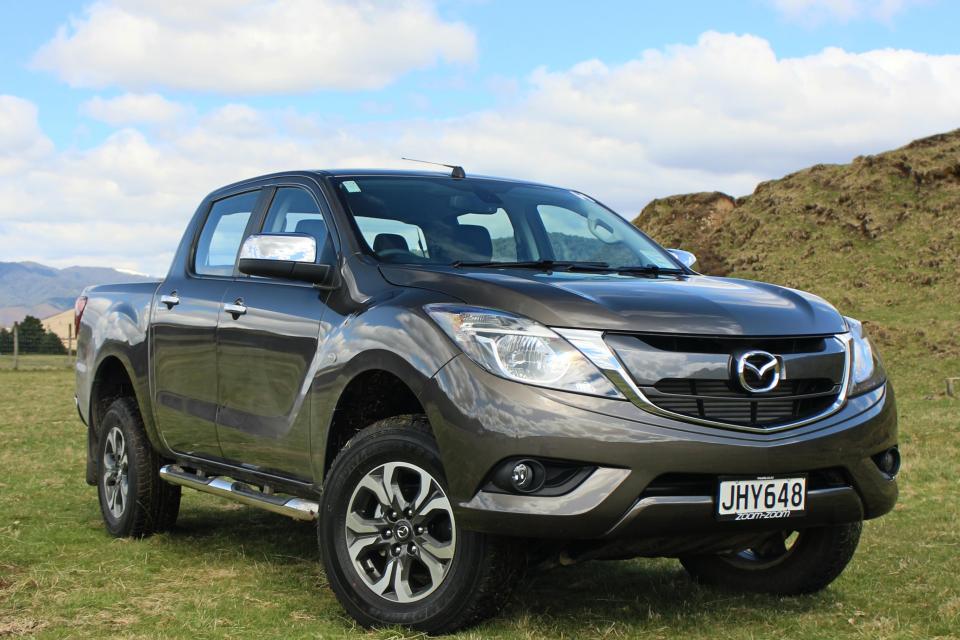It would not be unfair of us to say that Mazda has struggled somewhat with the latest BT-50. Standing in the shadows as the all-but-identical under the skin Ford Ranger soars high and beats the previously unbeatable Toyota Hilux into submission, the Mazda BT-50 proved one thing conclusively - looks matter. Particularly when the Ranger looked like a big truck and the BT-50 just looked, well, happy...
Now Ford has released an updated Ranger with even more truck-like looks and a whole host of high-tech driver assists and infotainment technologies to take on the forthcoming new Hilux from Toyota.
In response to Ford packing the new Ranger with technology (particularly in the top spec models) Mazda has decided take a completely different approach with the refreshed BT-50.
By simplifying the model range, dropping the pricey top spec models and no longer trying to match the Ranger spec-for-spec, Mazda has a clear intention of taking the fight to the “second tier” of ute sales in New Zealand. In other words - the other , much larger portion of the segment not taken up by Ranger and Hilux sales. By leaving the Ford Ranger and Toyota Hilux to duke it out for sheer numbers at the top, the BT-50 now takes on new appeal as Mazda also drops its prices by an average of $1,000 across the range.
The most noticeable difference between the old and new models is, thankfully, the front end. The previous BT-50 was largely unloved because of its controversial large chrome smile, but that is largely gone with the facelift.
Most of the chrome has been replaced by matt black, while the grille shape is far more horizontal and forward-thrusting. New headlights, with a strong horizontal chrome element also help flatten things out, while clear indicator lenses do away with the worst of the headlight’s swoopy offences.
The result is a far more conventional, muscular and rugged looking ute. The lesson here; if you make a ute, it shouldn’t look happy, kiddies.
While the front end is a massive improvement on the previous model, the rear is still unfortunately blighted by the odd horizontal taillights that just look vastly out of place.
For the new model year the BT-50 GLX now gets 8-way driver’s seat adjustment (including lumbar), a lockable tailgate on wellside models, a ladder rack (on wellside auto models) and an illuminated, lockable glovebox, while the GLX Sport also gets these, but adds new 17-inch alloy wheels and side steps.
The GSX gains an automatic day/night rearview mirror, an in-mirror reversing camera, satellite navigation, automatic headlights, rain sensing wipers and a centre rear seat armrest.
One of the biggest points of difference between the BT-50 and the Ranger was that the 4WD Mazda’s all came standard with a locking rear differential. While Ford recently made the locking diff standard across more models, Mazda has expanded on this by making the locking diff standard across all models, including 2WD models.
On the inside, the BT-50 was always one of the best in the segment anyway, so Mazda has wisely chosen to leave well enough alone here, merely updating it slightly with new seat and door trims.
Of course the BT-50 still boasts the same big, brawny 147kW/470Nm 3.2-litre inline 5-cylinder diesel turbo engine, hooked up to a choice of a six-speed manual or six-speed automatic transmissions.
On the road little has changed with the BT-50, but then little needed to change. The big 5-cylinder engine still pulls like a freight train, while both transmissions are slick, willing and easy to live with.
Off the road the BT-50 is, again, still supremely confident. The manual is almost impossible to stall when in low range and simply chugs along relentlessly on idle. If things get gnarlier then the BT-50 still packs the usual off-road electronics, but between the relentless torque of the engine, the perfectly-spaced gearing at the the locking rear diff, it honestly could easily get by without them. Still, it is nice to know they are there.
In terms of pricing the base 2WD GLX cab/chassis is unchanged at $35,295, some of the other GLX models increase slightly, but gain extra equipment that adds more than the value of the increase, while everything else drops between $500 and $2,300, leaving the automatic 4WD GSX Wellside toping the range at $57,295.
While the changes to the BT-50 aren’t exactly huge, the realignment of models, additional equipment and general drop in pricing only add appeal to the Mazda option, while the new, far more convincingly ute-like face does wonders for the street red. And, hopefully for Mazda, sales.
Prices/models
2WD GLX Single Cab Chassis Manual - $35,295
2WD GLX Freestyle Cab Chassis Automatic - $40,295
2WD GLX Double Cab Wellside Manual - $41,695
2WD GLX Double Cab Wellside Automatic - $43,695
2WD GSX Double Cab Wellside Manual - $45,295
2WD GSX Double Cab Wellside Automatic - $47,295
4WD GLX Single Cab Chassis Manual - $45,295
4WD GLX Freestyle Cab Chassis Automatic - $50,295
4WD GLX Sport Freestyle Cab Chassis Automatic - $51,795
4WD GLX Double Cab Wellside Manual - $51,695
4WD GLX Double Cab Wellside Automatic - $53,695
4WD GSX Double Cab Wellside Manual - $55,295
4WD GSX Double Cab Wellside Automatic - $57,295




